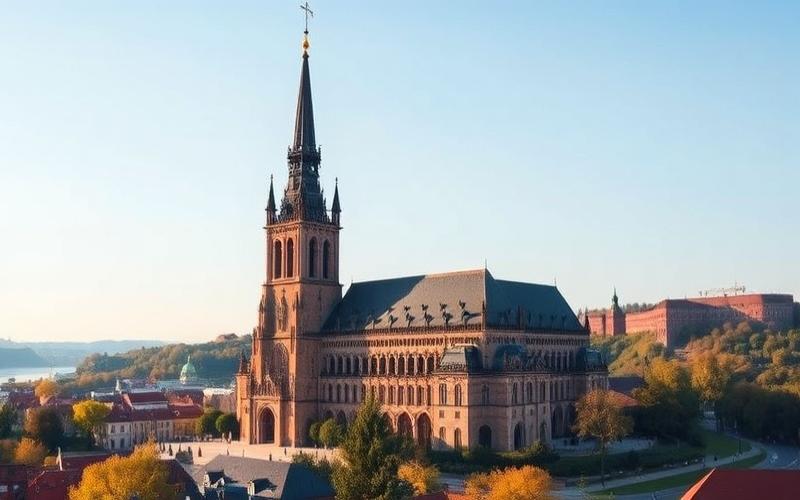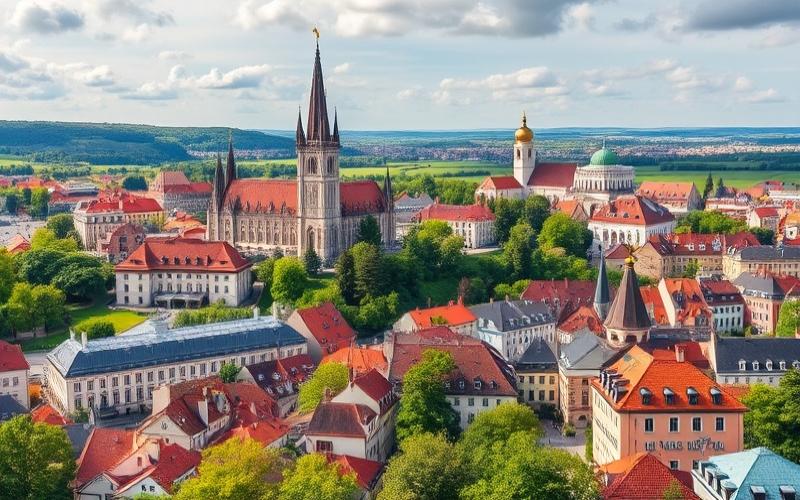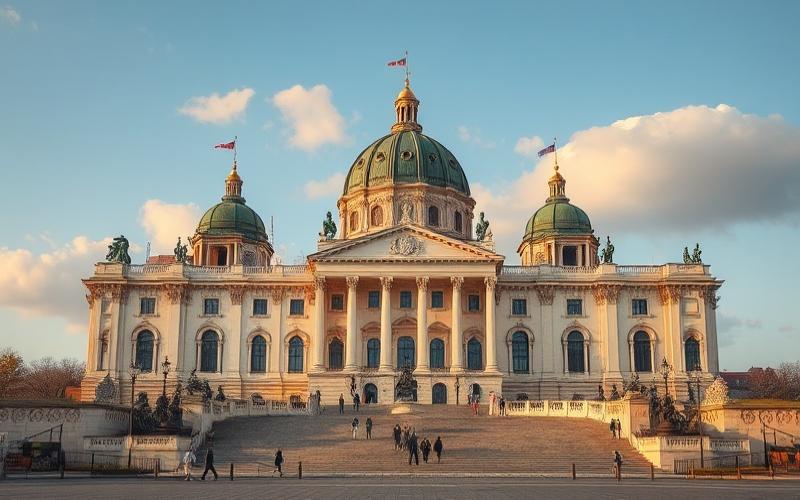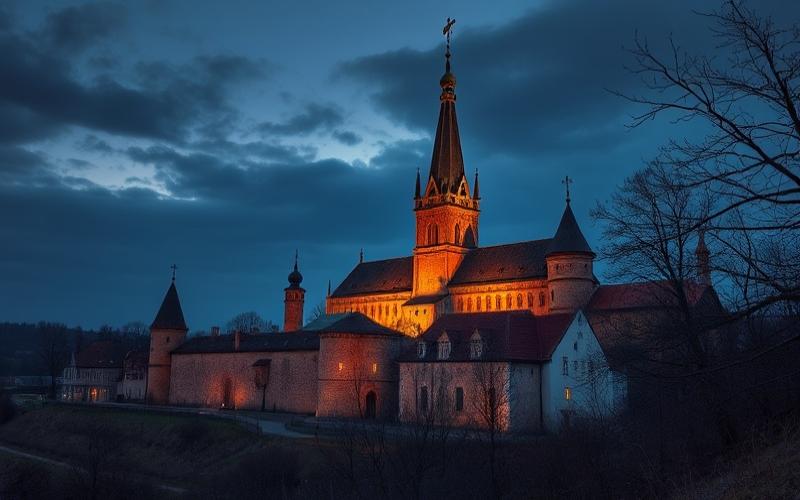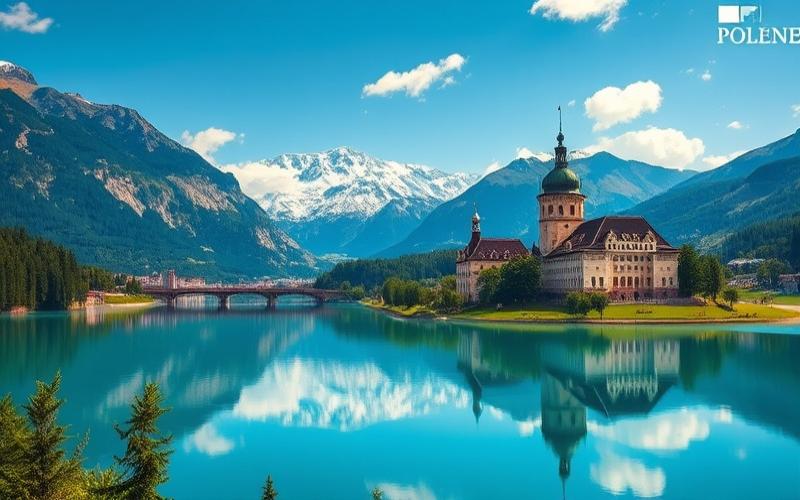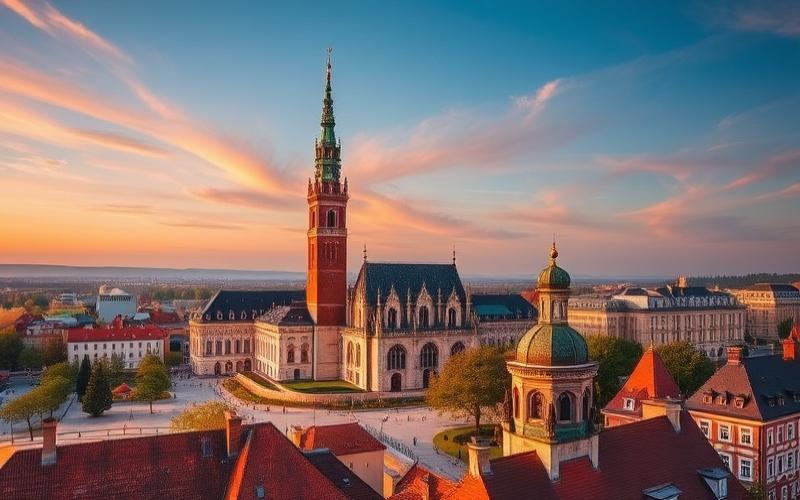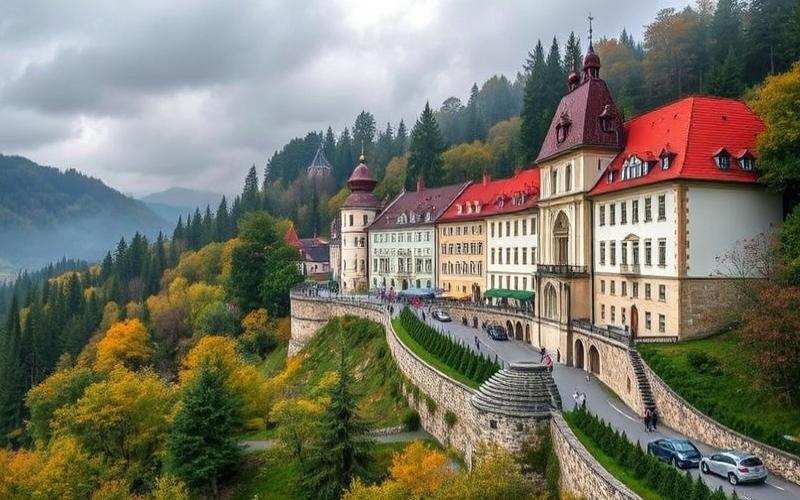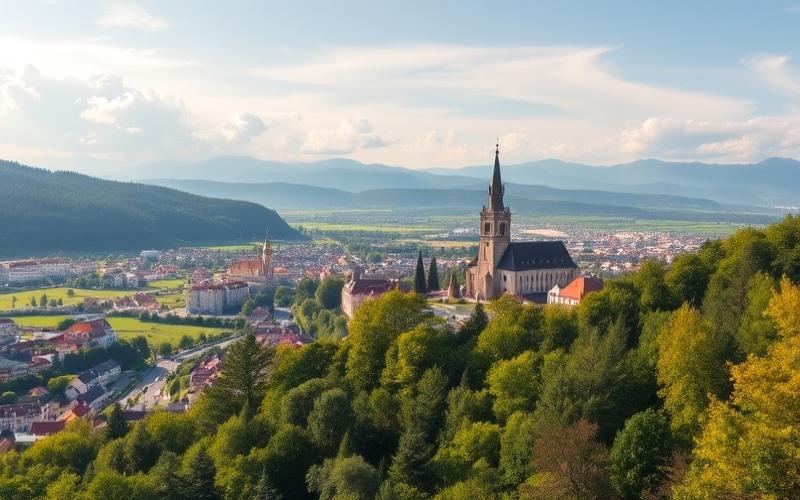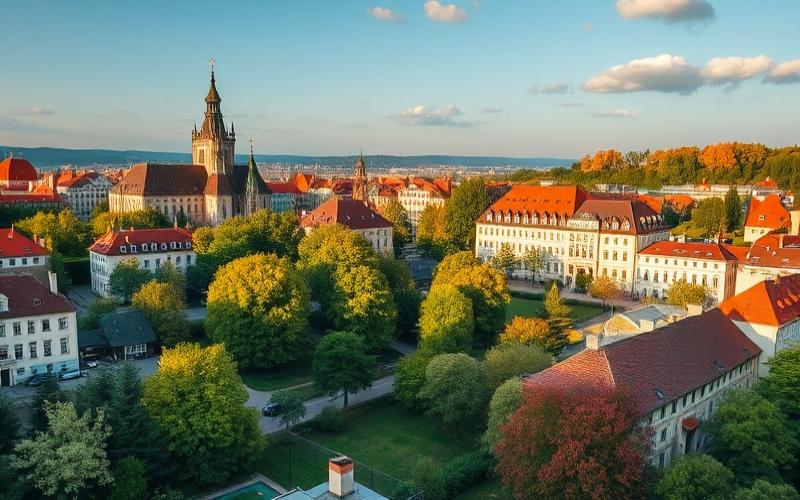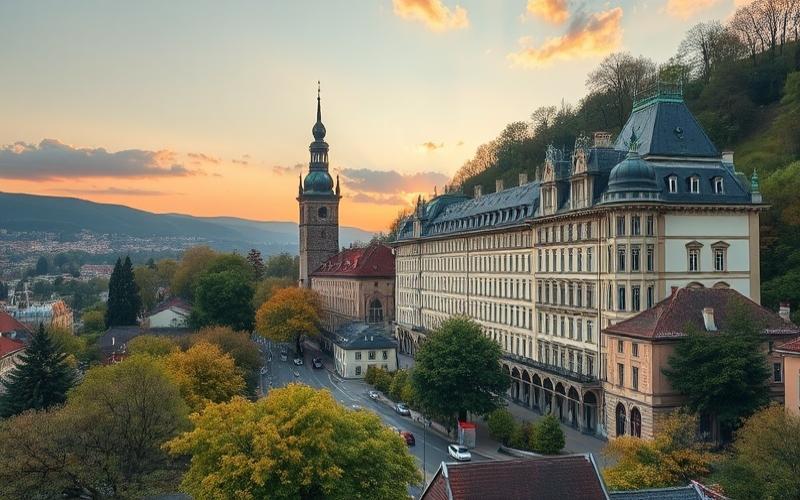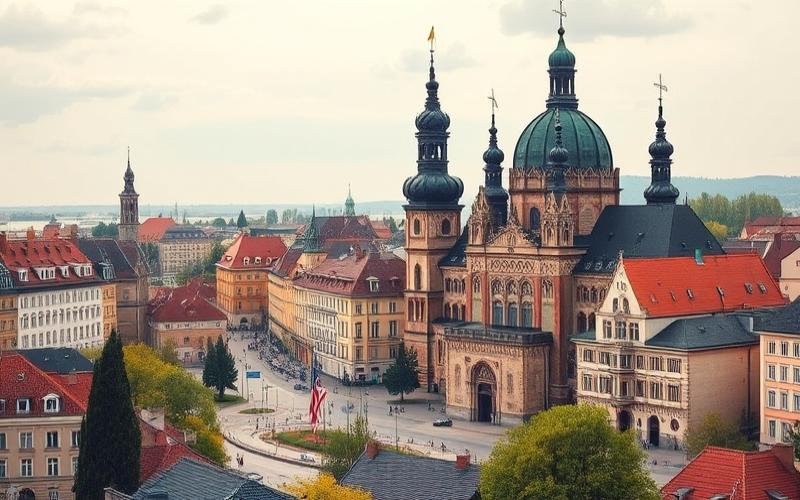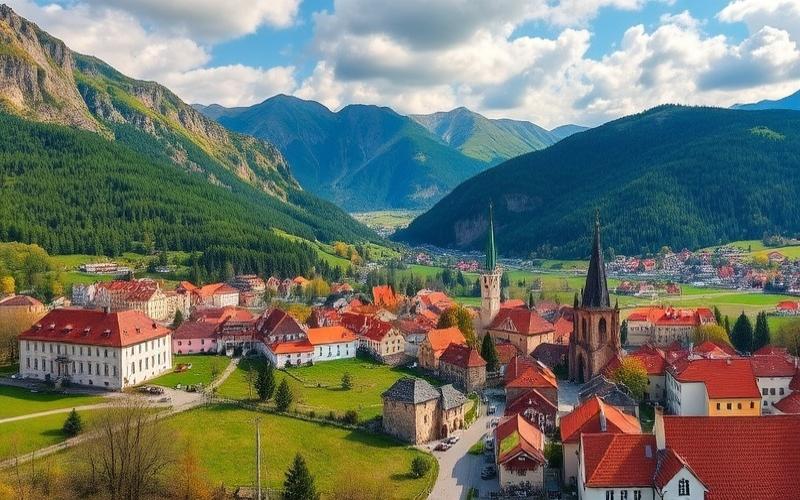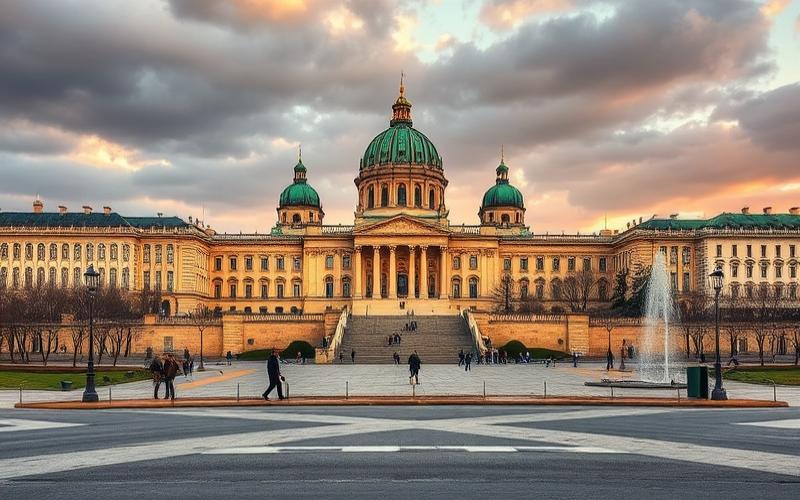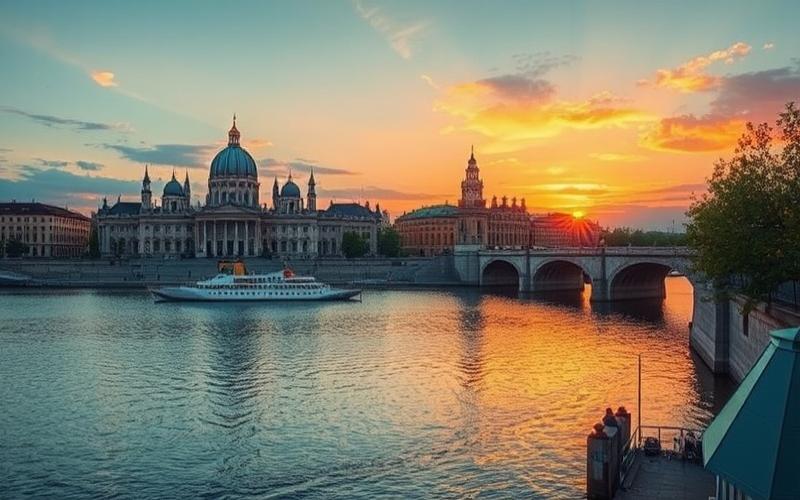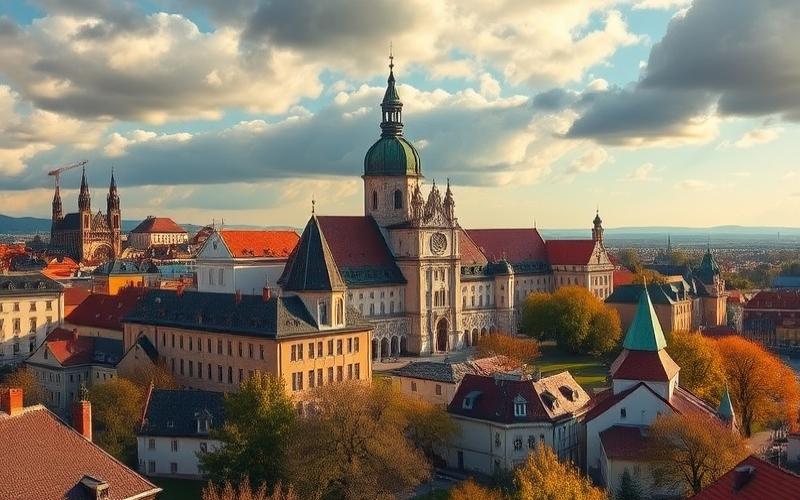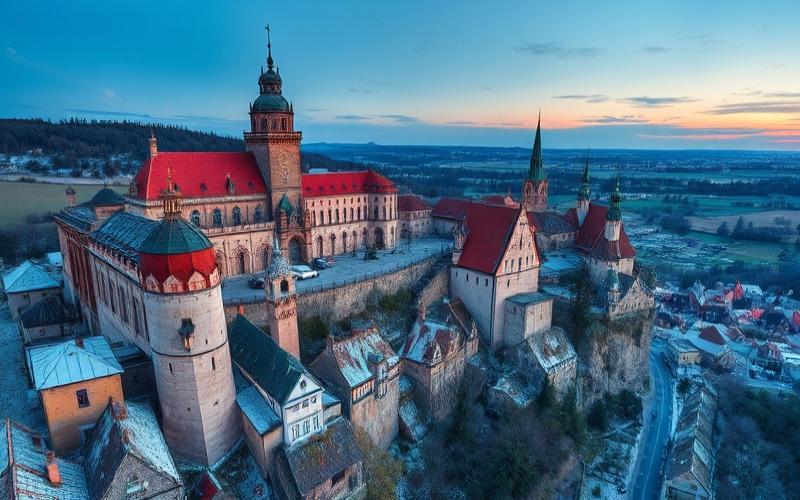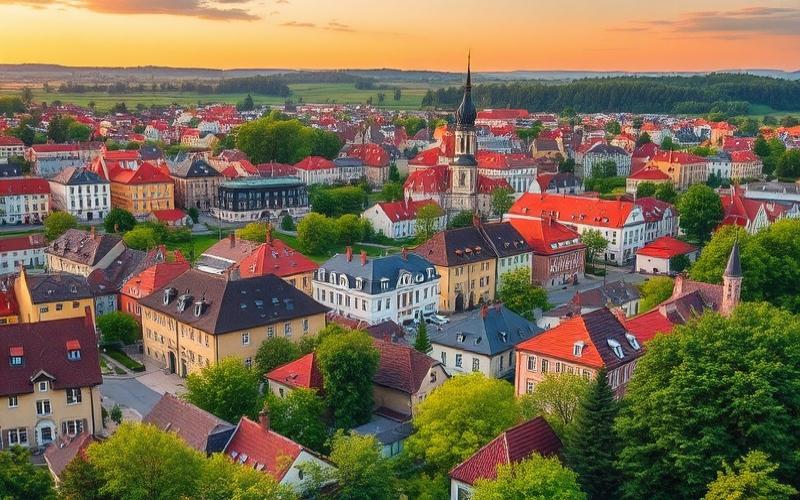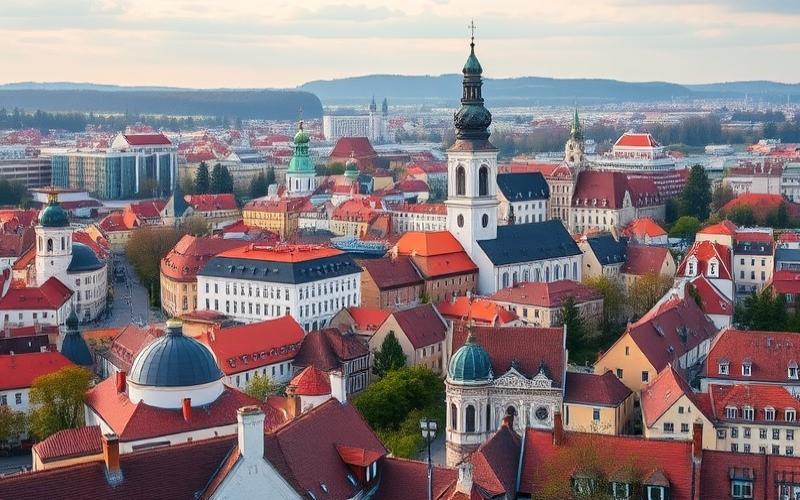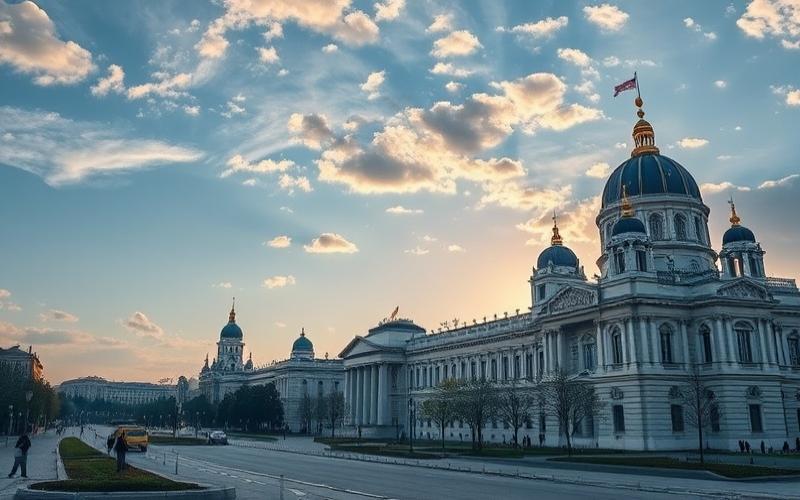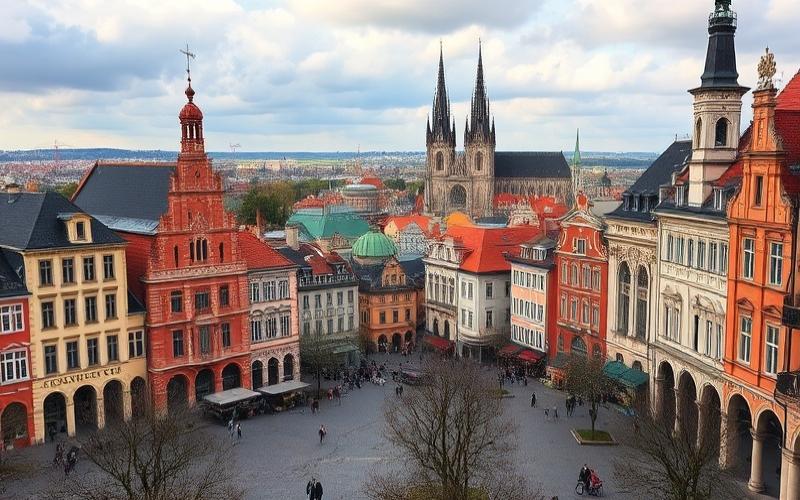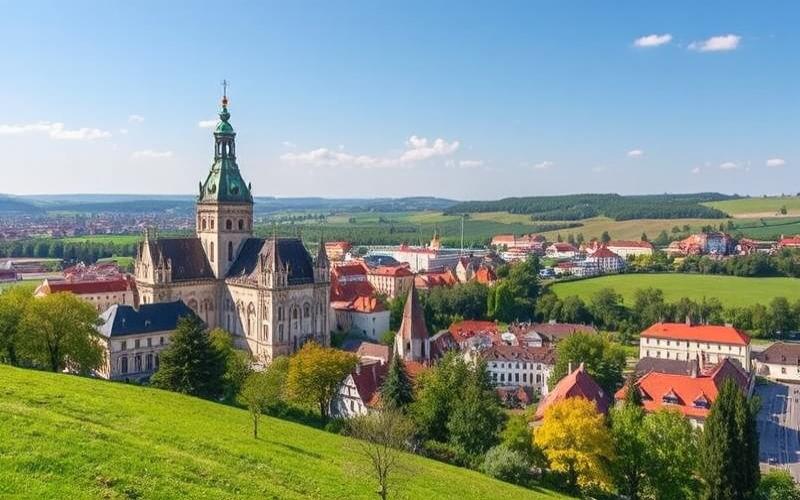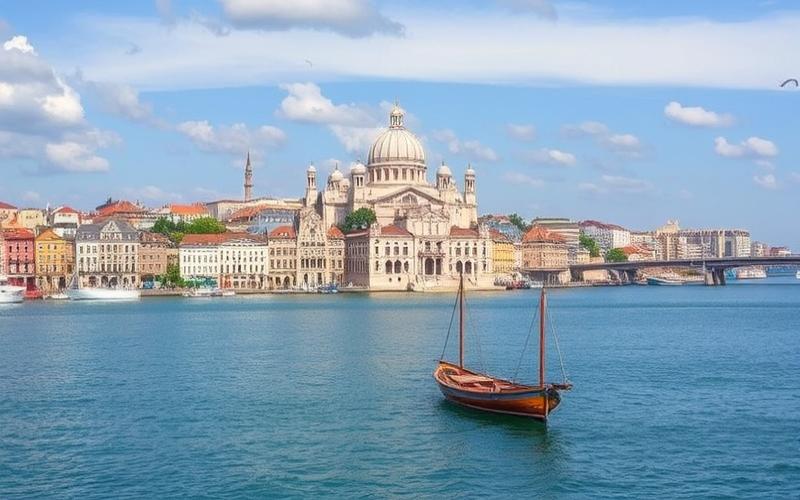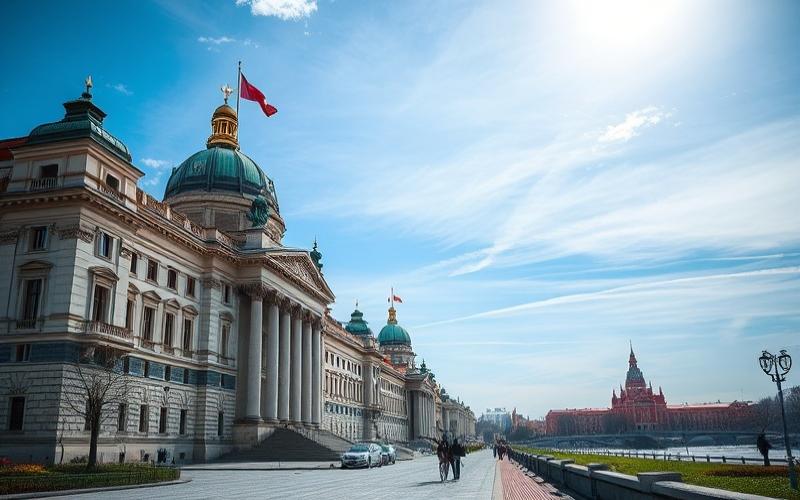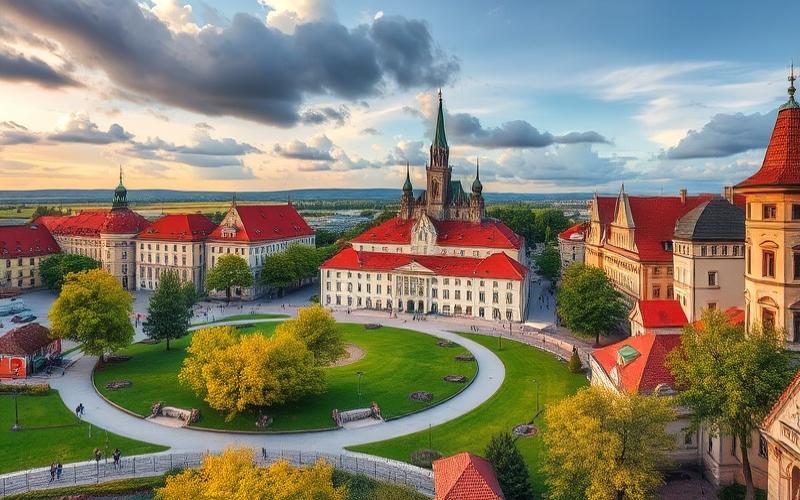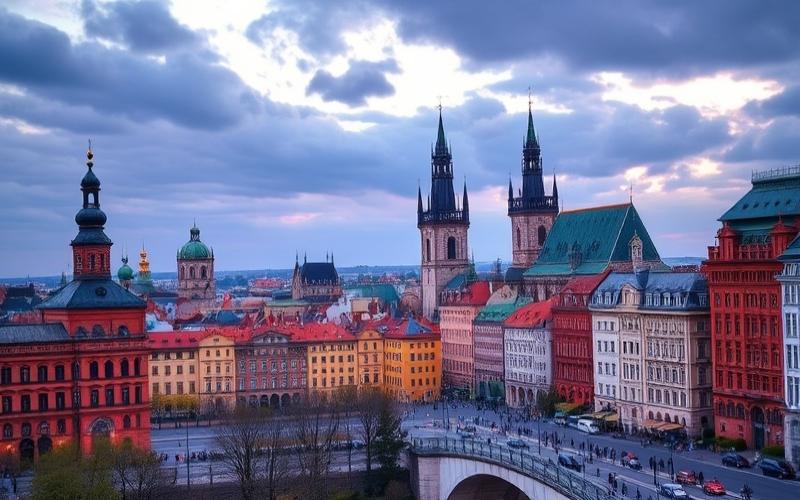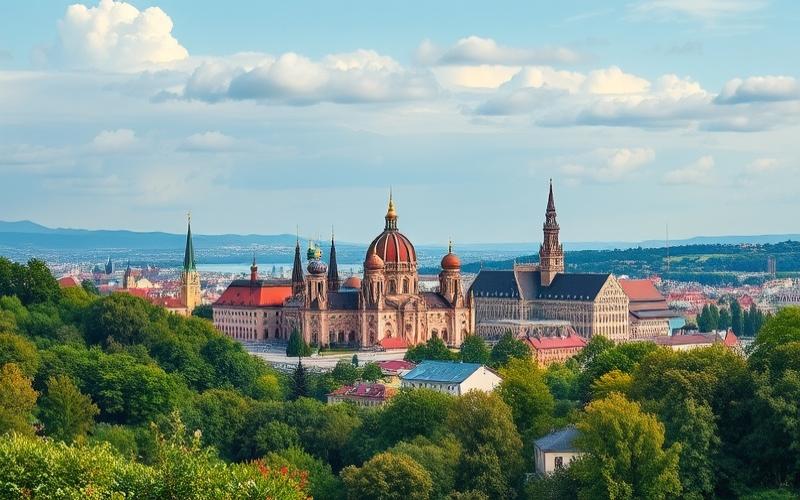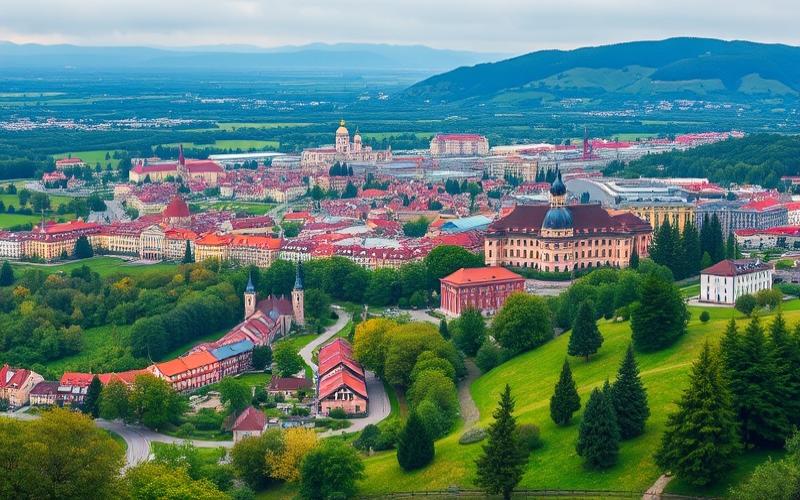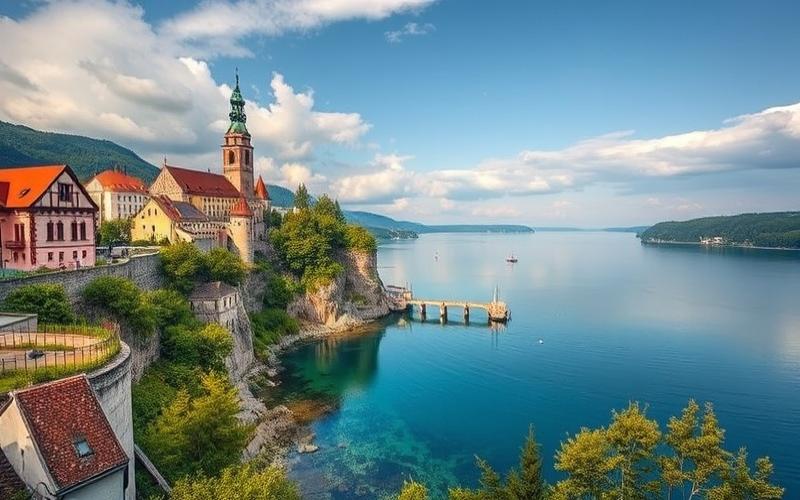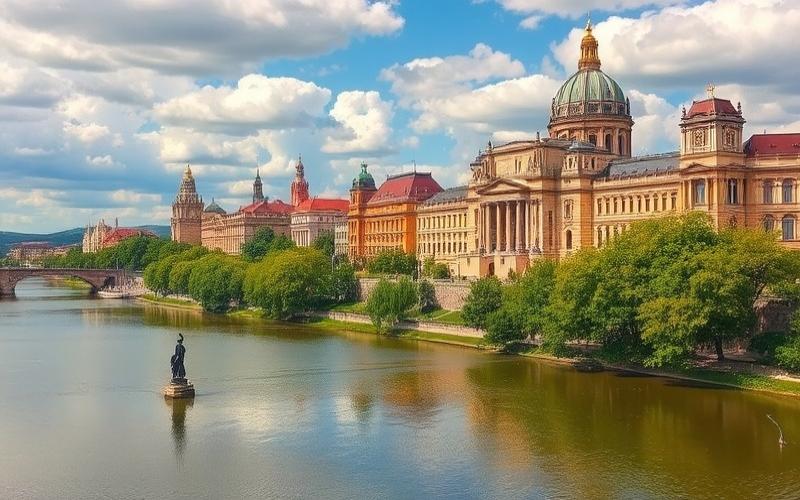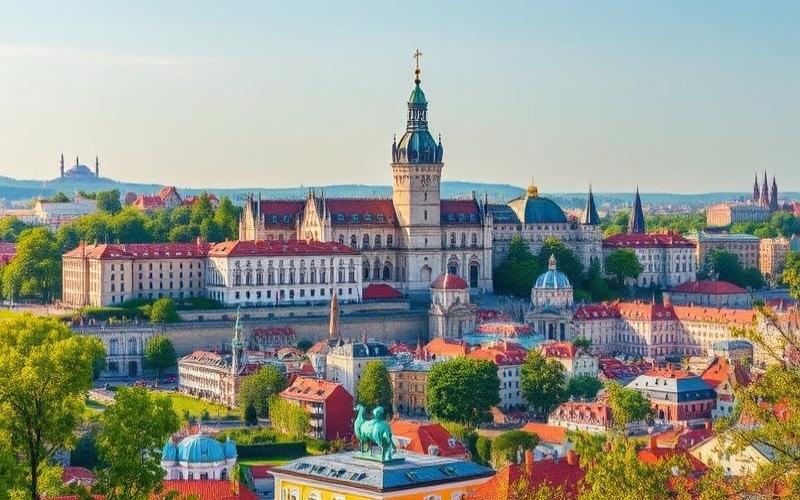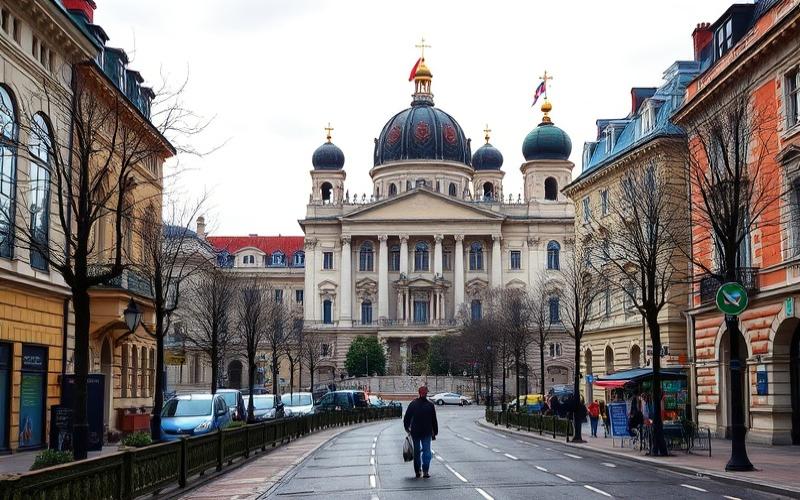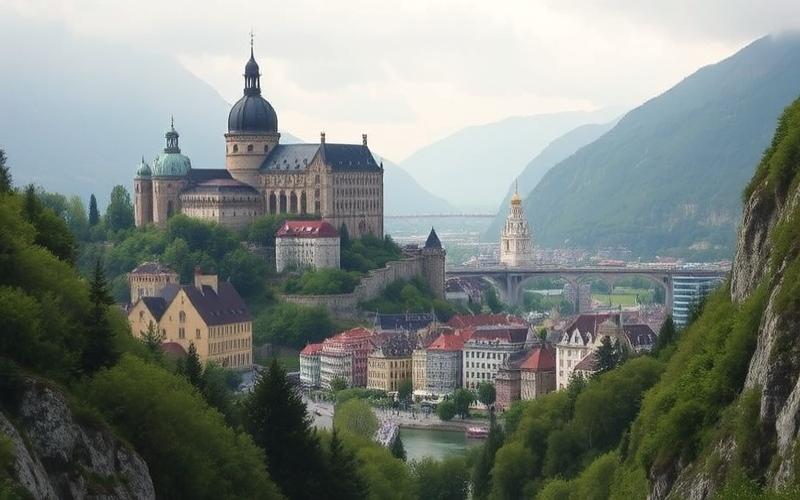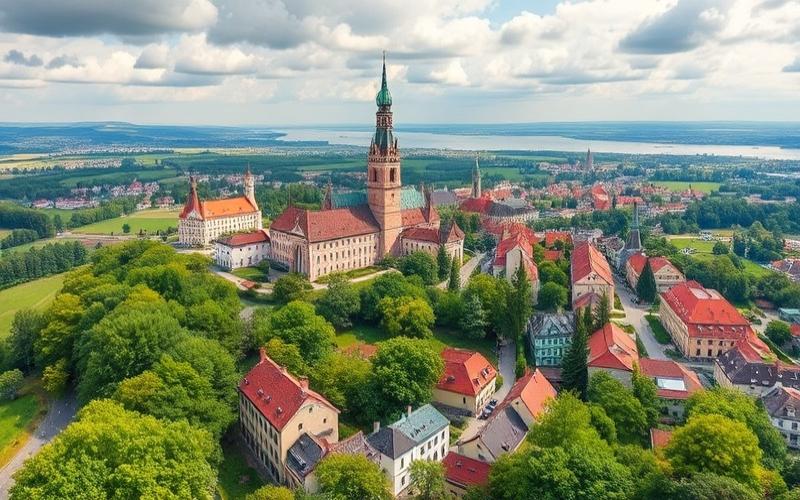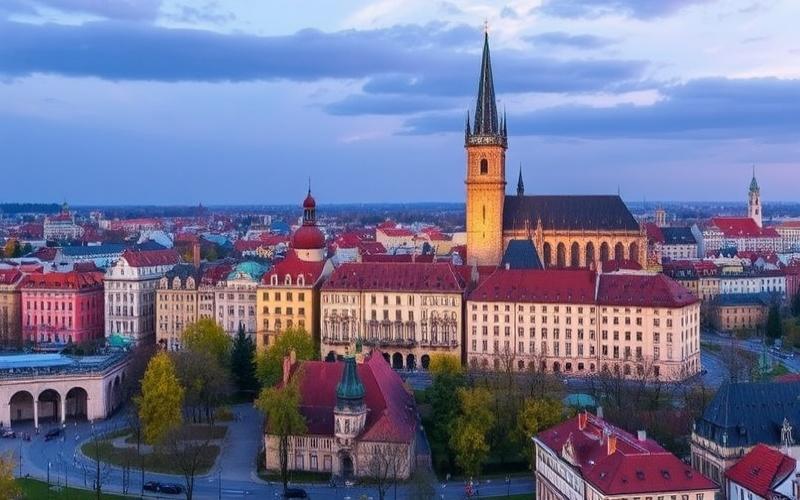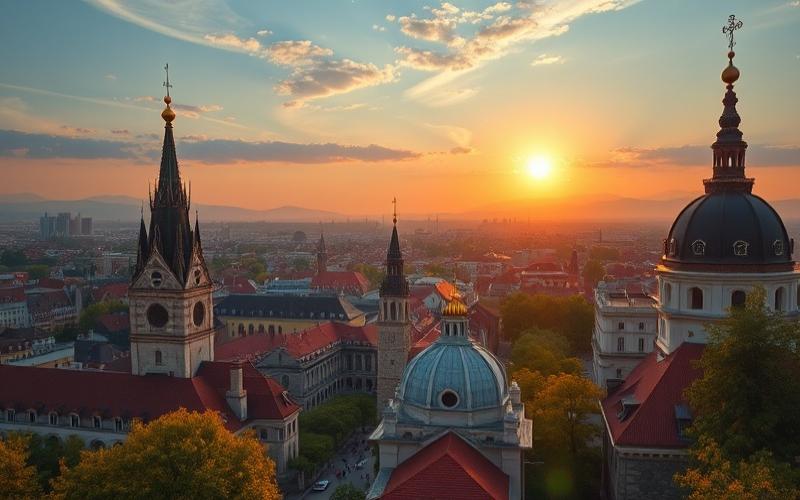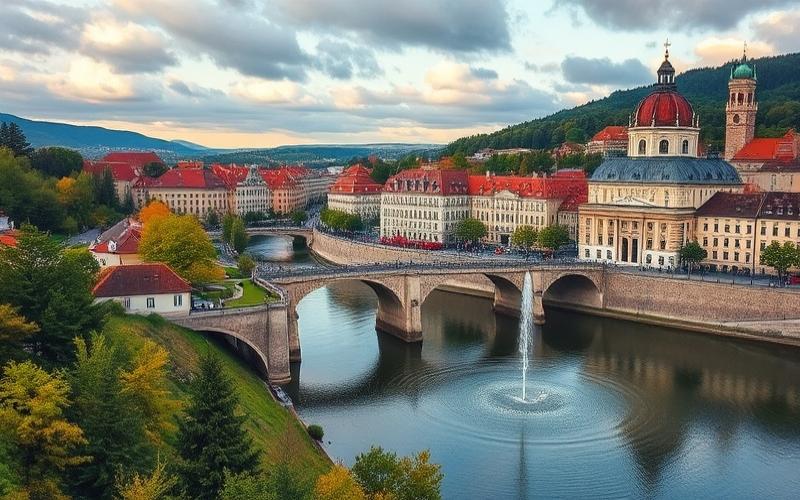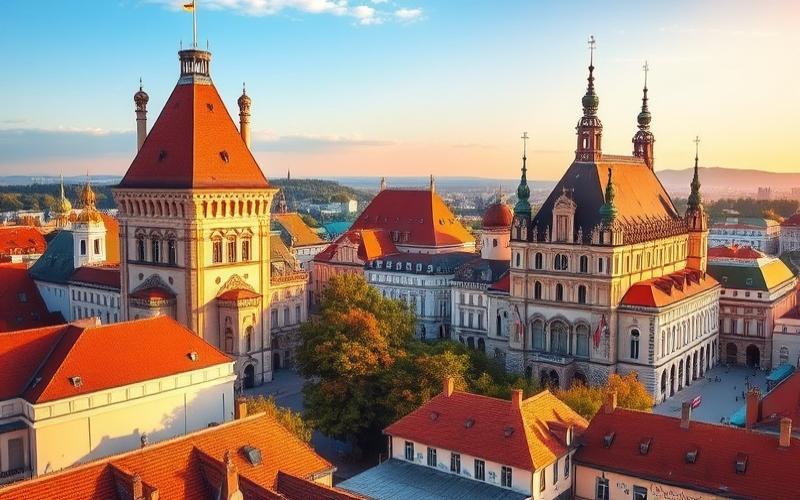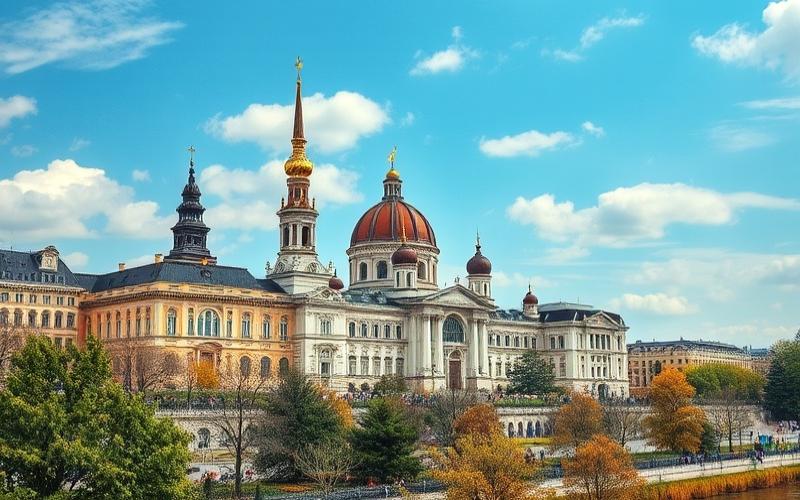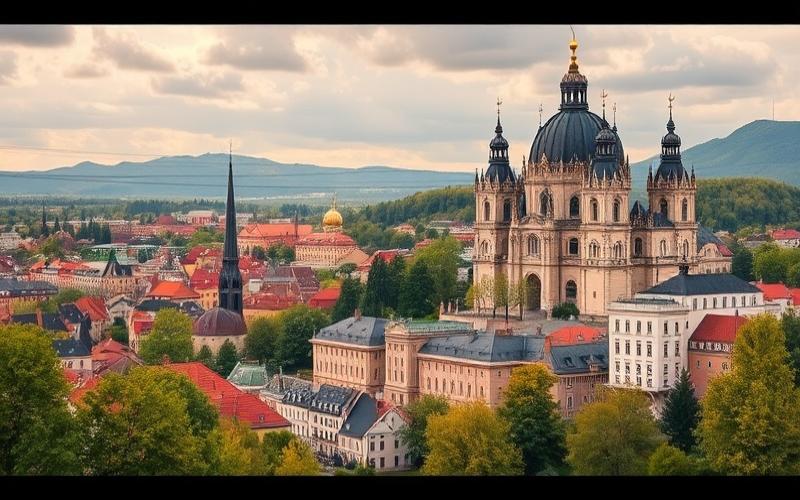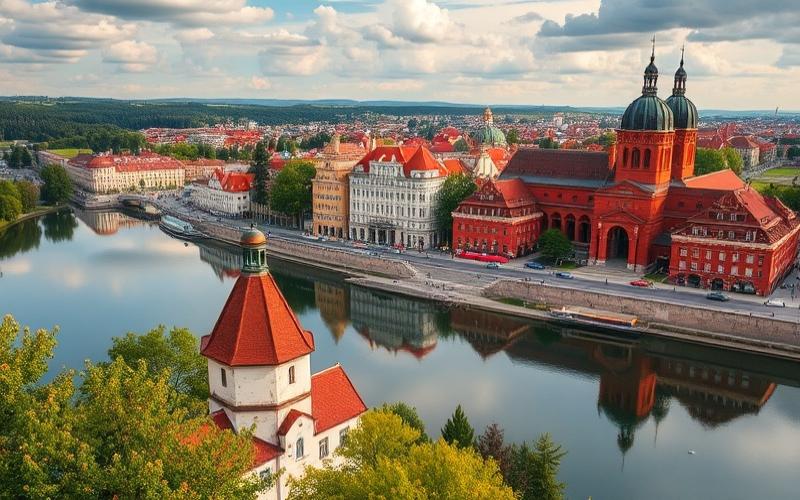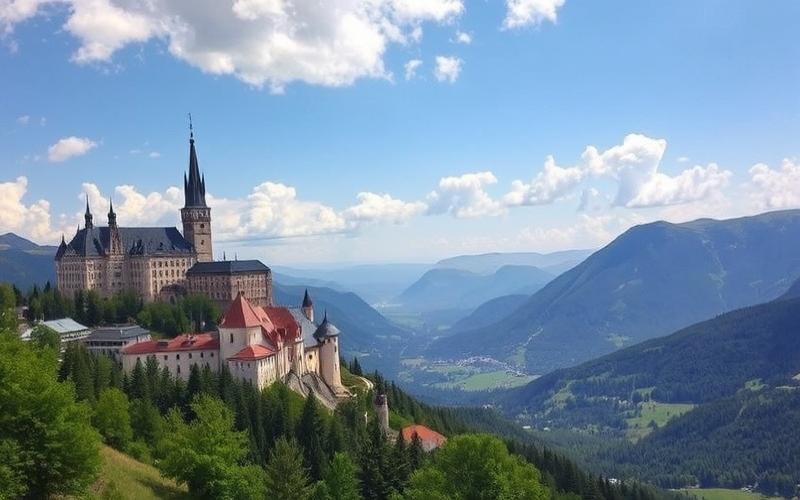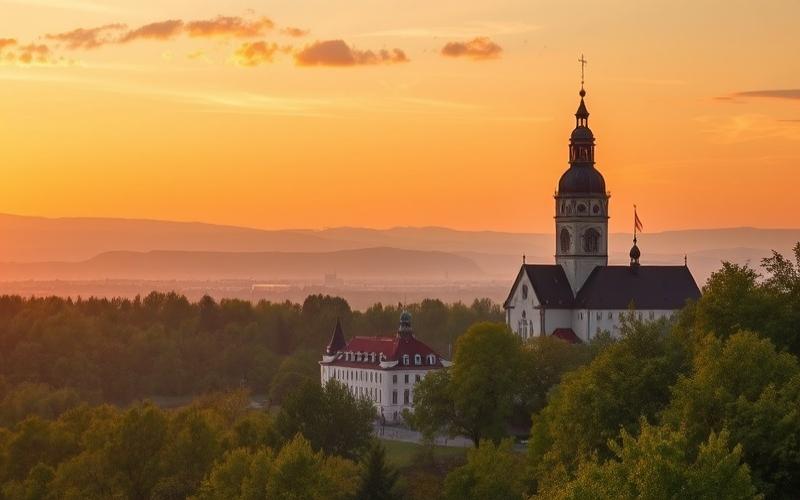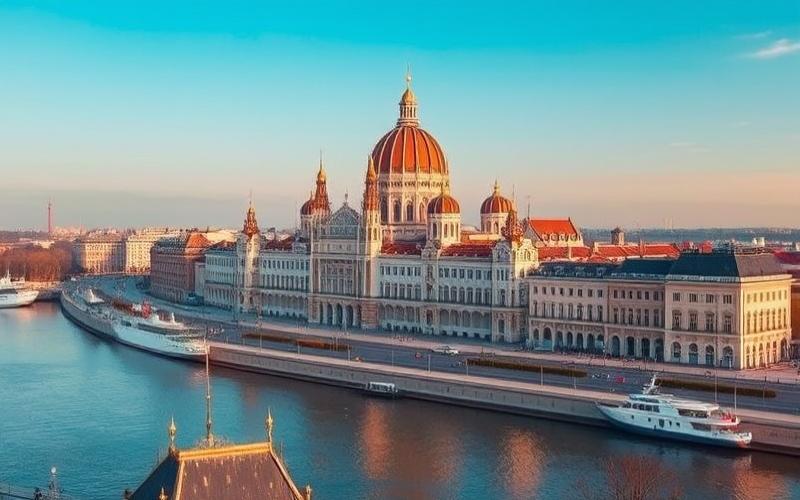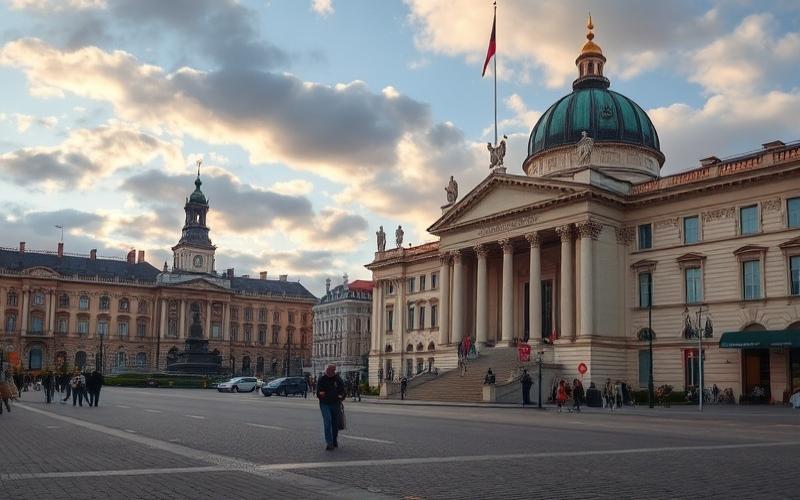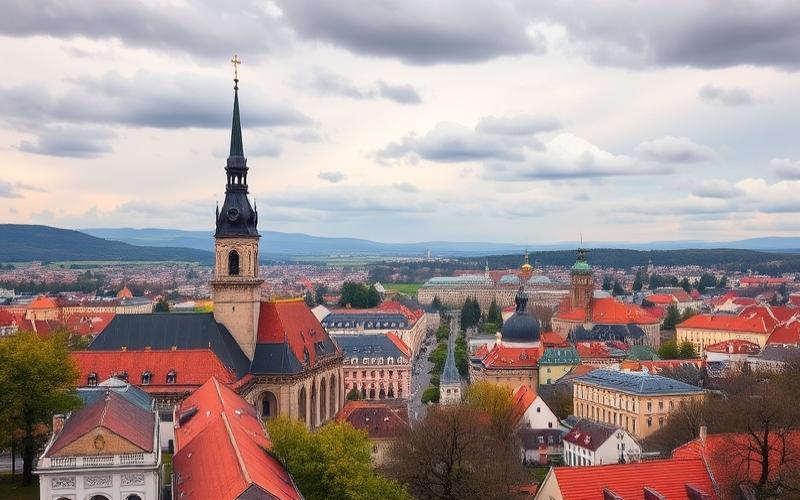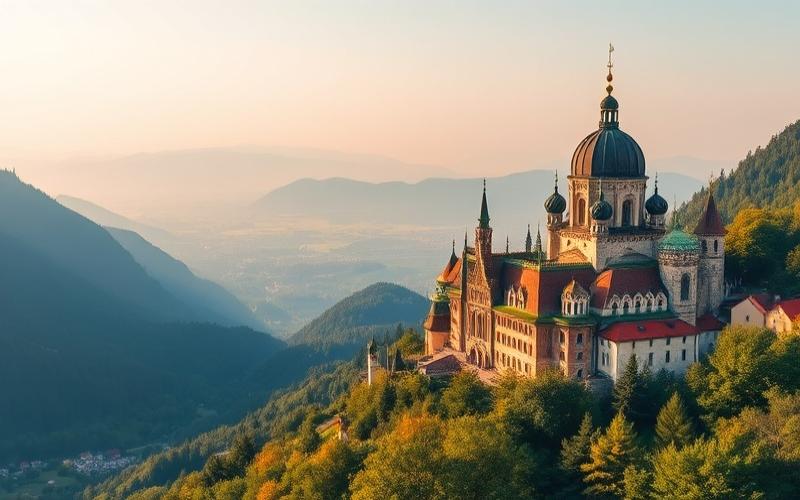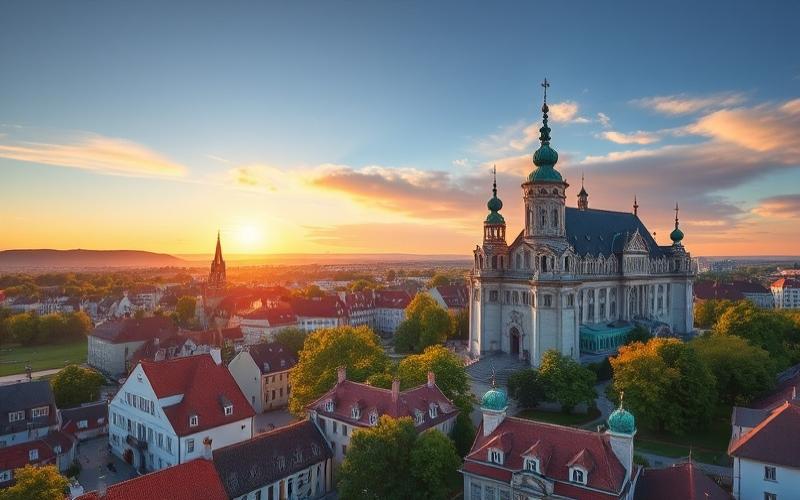
 Published on and written by Cyril Jarnias
Published on and written by Cyril Jarnias
The Rise of Poland’s Luxury Real Estate Market
As Poland transforms into a sought-after destination for savvy real estate investors, the luxury property market is experiencing unprecedented growth, redefining Eastern Europe’s status in the prestige sector.
Warsaw and Krakow: Luxury Epicenters
With cities like Warsaw and Krakow rapidly expanding, the appeal of lavish homes and high-end apartments attracts both local and international wealth.
Challenges and Opportunities
However, this momentum comes with complex challenges, particularly regarding regulation and sustainability, prompting careful examination of trends and opportunities shaping this real estate niche.
Good to Know:
The Polish real estate market benefits from stable economic growth and a legal framework favorable to foreign investors.
An Irresistible Appeal for Wealthy Investors
The luxury property market in Poland is experiencing remarkable growth, supported by a resilient economy and the rapid enrichment of the local population. In 2023, the country’s luxury sector exceeded €9.2 billion, with annual growth exceeding 10%. This momentum is driven by the emergence of a new affluent class primarily composed of bankers, entrepreneurs, and real estate developers.
Attraction Factors for Wealthy Investors:
- Economic Stability: Poland boasts a robust economy with a resilient and attractive real estate market. Real estate transaction volume reached approximately €5 billion by the end of 2024 (+100% year-over-year), indicating a favorable climate for foreign investment.
- Cultural Appeal and Architectural Heritage: Major Polish cities offer a unique blend of restored historical monuments, preserved bourgeois homes, and contemporary architecture integrated into historically rich neighborhoods.
- Premium Lifestyle: Increased purchasing power is accompanied by growing demand for prestigious properties offering modern comfort and prime locations.
| City | Average Resale Price (PLN/m²) Q1 2025 | Annual Change | Average New Build Price (PLN/m²) Q1 2025 | Annual Change |
|---|---|---|---|---|
| Warsaw | 16,459 (~$4,250) | +8.1% | 16,383 (~$4,233) | +3.1% |
| Krakow | 15,099 (~$3,900) | +10.6% | 15,686 (~$4,053) | +6.6% |
| Wrocław | 12,675 (~$3,275) | +9.3% | 14,257 (~$3,684) | +11.1% |
Current High-End Market Trends:
- Continuous Price Increases: In Warsaw, Krakow, and Wrocław—the main sought-after destinations—the price per square meter is rising between +8% and +11% year-over-year. In Warsaw particularly, the average price for existing apartments already exceeds 15,000 PLN/m², confirming the appetite for premium real estate.
- Sustained Demand: Despite some expected stabilization signals by year-end or early 2025 according to local experts (SonarHome), demand remains very strong from both national and international buyers looking to secure their assets or diversify their portfolios.
- Prime Locations: Central historic districts like Śródmieście in Warsaw or Stare Miasto in Krakow concentrate the majority of high-end transactions due to their cultural proximity (renowned museums), unique architectural setting (renovated palaces), and exclusive services.
Potential Impact of International Events
The regular hosting of major cultural or economic events further enhances Poland’s attractiveness on the international stage. This visibility encourages the arrival of new foreign investors drawn by the superior value compared to mature European markets.
International Comparison
Poland stands out clearly against other European destinations thanks to:
- Its higher rental yields;
- Continuous dynamism despite global uncertainties;
- Its architectural heritage being less saturated than those in Paris or London but equally culturally valued.
Good to Know:
Poland, with its booming luxury property market, is increasingly attracting wealthy investors due to its solid economic stability and rich cultural heritage. The country’s unique architectural appeal, combined with growing demand for prestigious residences in Warsaw and Krakow, contributes to international interest; in 2022, demand for these residences increased by 14%, according to a Knight Frank study. The impact of international events, such as infrastructure development and adherence to sustainability standards, further strengthens this market. Compared to other popular European destinations, Poland offers excellent value for money, and experts predict sustained growth potential, making the country an attractive alternative to more mature markets like London or Paris.
Key Takeaways
The Polish luxury real estate market combines exceptional macroeconomic stability, unique historical heritage, and upward prospects driven by an affluent local clientele and growing interest from abroad. These assets now position Warsaw, Krakow, and even Gdańsk among the preferred options for any international investor seeking performance and exclusivity in their residential investments.
Remarkable Characteristics of Luxury Properties
The luxury property market in Poland stands out through a refined combination of architectural styles, exclusive amenities, and noble materials, while placing great importance on location.
Predominant Architectural Styles
Polish luxury properties often display a harmonious blend between traditional architecture (manors inspired by historical palaces) and minimalist contemporary design. Modernized classical elements are frequently observed, with careful integration into the natural or urban landscape.
Commonly Included High-End Amenities:
| Amenity | Description |
| Private Pools | Indoor or outdoor, sometimes infinity |
| Spas | Comprehensive wellness spaces (saunas, steam rooms) |
| Fitness Facilities | Fully equipped rooms with modern equipment |
| Private Cinemas | High-end audio/video systems |
| Wine Cellars | Precise climate and storage control |
- Advanced home automation for centralized equipment management
- Spacious garages for prestige vehicles
Cutting-Edge Technologies
Residences incorporate sophisticated home automation systems enabling automated management (lighting, heating/cooling, security). Devices include:
- 24/7 video surveillance with remote access
- Secure motorized gates
- Smart fire/intrusion detectors
Strategic Importance of Location
A property’s value is strongly tied to its location:
- Historic City Centers (Krakow, Warsaw): cultural proximity and access to exclusive services
- Lakefronts & Coastal Areas: panoramic views and sought-after tranquility
- Mountain Regions, particularly the Tatras: prestigious resorts like Zakopane offering privacy and spectacular natural landscapes
Noble Materials Used
| Material | Primary Use |
| Natural Stone | Exterior facades, interior/exterior floors |
| Polish Marble | Interior decoration & sculptural elements |
| Local Solid Wood | Exposed frameworks, floors & paneling |
White or beige natural stone and noble wood such as oak or beech are particularly prized. Locally extracted marble rivals international imports in quality.
Contemporary touches may include the use of structural glass combined with natural stones to maximize light.
Interior Design Trends in the Polish Luxury Market
Current trends favor:
- Open spaces – large bay windows connecting interior and exterior.
- Neutral palettes enhanced by colorful elements or contemporary artworks.
- Subtle but omnipresent integration of connected technologies.
- A sought-after balance between maximalist modern comfort (custom furniture), local artisanal authenticity (carved woodwork), and environmental respect through sustainable materials.
The ensemble creates a universe where revisited Polish tradition meets international innovation, meeting the high expectations of a demanding clientele.
Good to Know:
In the Polish luxury property market, architectural style often blends European classicism with contemporary influences, reflecting timeless sophistication. High-end real estate regularly includes amenities such as private pools, luxurious spas, and state-of-the-art fitness facilities, while advanced technologies for security and comfort like home automation and integrated surveillance systems are common. Location plays a crucial role, with a preference for prestigious locations such as the historic city centers of Warsaw or Krakow, picturesque lake shores, or the Tatra Mountains, offering spectacular views. The construction materials used are of the highest quality, with natural stones and premium wood adding a touch of prestige. As for interiors, current trends favor clean, minimalist designs enhanced by art pieces and designer furniture.
Poland’s Most Sought-After Neighborhoods
Poland’s most sought-after neighborhoods particularly attract luxury property buyers due to their unique combination of prestige, security, access to high-end infrastructure, and proximity to major cultural and economic centers. These areas, often located in city centers or their immediate vicinity, offer a refined living environment and excellent quality of life, reflected in growing demand and high prices per square meter.
Distinctive Characteristics of Prestigious Neighborhoods:
- Elegant architecture, often historical or incorporating modern high-end residences
- Well-maintained green spaces, urban parks, panoramic views
- Presence of exclusive services: gourmet restaurants, luxury boutiques, wellness centers
- Enhanced security and peaceful atmosphere
Available Infrastructure:
- International schools and renowned private institutions
- Easy access to public transportation (tram, metro, main stations)
- Proximity to high-end shops and shopping centers
- State-of-the-art medical facilities
Cultural and Historical Points of Interest:
- Museums, theaters, art galleries
- Iconic monuments and historical sites
- Cultural venues (operas, art-house cinemas)
| City | Prestigious Neighborhood | Average Price/m² (PLN) | Key Strengths |
|---|---|---|---|
| Warsaw | Śródmieście (Center) | 16,459 | Cultural life, offices, international schools |
| Wrocław | Stare Miasto, Krzyki | 14,000 – 18,000 | Heritage, parks, university proximity |
| Krakow | Stare Miasto, Zwierzyniec | 15,000 – 18,000 | History, museums, Michelin-starred restaurants |
| Gdańsk | Śródmieście, Oliwa | 13,000 – 16,000 | Coastal location, parks, cultural life |
Comparison with Less Sought-After Neighborhoods:
Peripheral or renovation neighborhoods (e.g., Nadodrze in Wrocław, Psie Pole, some sectors of Praga in Warsaw) show lower prices, around 9,000 to 12,000 PLN/m².
These areas often offer fewer prestige infrastructures, less accessibility to international institutions, and more limited cultural life.
Demand is lower here, but some of these areas are experiencing early gentrification that could influence prices in the medium term.
Current Luxury Real Estate Market Trends:
Annual increase in residential real estate prices of +14.4% in 2025, driven by the scarcity of prestige properties and growing international demand.
Very low vacancy rates in central neighborhoods, increasing price pressure.
Buyers seek properties with terraces, private green spaces, and access to custom services.
Examples of Average Prices Per Square Meter (2025):
| Neighborhood | Average Price (PLN/m²) | Average Price (EUR/m²) |
|---|---|---|
| Warsaw Center | 16,459 | ~3,800 |
| Wrocław City Center | 18,000 | ~3,354 |
| Wrocław Krzyki | 10,500 | ~2,516 |
| Wrocław Nadodrze | 9,000 | ~2,157 |
Key Takeaways:
Luxury neighborhoods in Poland stand out due to their dynamism, heritage, quality infrastructure, and constant appreciation in the real estate market, making them preferred investments for demanding buyers.
List of Criteria Sought by Prestige Buyers:
- Proximity to the historic center
- Access to international schools
- Secure and quiet environment
- Rich cultural and gastronomic offerings
- Nearby green spaces and recreational activities
Good to Know:
In Poland, neighborhoods such as Śródmieście in Warsaw, Stare Miasto in Krakow, and Sopot in Gdańsk are particularly sought after for luxury properties. These locations attract due to their prestigious setting, historical architecture, and superior quality of life. Śródmieście, for example, benefits from excellent connectivity through public transportation and offers a range of international schools, high-end boutiques, and restaurants, with an average price of 15,000 PLN/m². Krakow appeals with its museums and heritage sites, while Sopot offers a prized coastal setting and modern facilities. Compared to less central neighborhoods, these areas guarantee a more stable return on investment, despite higher prices. Well-developed infrastructure and the presence of green spaces make them even more attractive, with a real estate market constantly evolving due to growing demand from local and international investors.
Key Luxury Market Trends
Analysis of Economic Factors Influencing Poland’s Luxury Property Market
Interest rates experienced a period of increase, leading to a decrease in transaction volume and a slowdown in price appreciation. However, recent stabilization has allowed the market to regain dynamism, with an average price increase of about 7% over the past twelve months.
Polish economic growth has slowed after several prosperous years: GDP progression is more moderate in 2025, and fears of a potential recession are dampening buyer enthusiasm.
Government policies are evolving: between targeted support for homeownership (subsidized real estate loans) and tax increases for certain segments, they contribute to an uncertain context for high-end investors.
| Factor | Influence on the Market | Concrete Examples |
| Interest Rates | Slowdown then recovery | Regained momentum after stabilization |
| Economic Growth | Moderation | Reduced confidence among some buyers |
| Fiscal Policy | Increased overall cost | Higher taxes for luxury properties |
Luxury Buyer Preferences
Buyers now prefer:
- Primary or secondary residences offering contemporary aesthetics, advanced functionality, and private outdoor spaces.
- Sought-after locations include Warsaw (Mokotów, Śródmieście neighborhoods), Krakow (Old Town), Wrocław, as well as coastal areas (Sopot) or mountain regions (Zakopane).
- Access to nature while remaining close to a major city is becoming central in real estate choices.
List of priority criteria:
- New or renovated high-end properties
- Enhanced security & privacy
- Panoramic views/direct access to green spaces
Innovations and Integrated Technologies
Luxury properties now systematically incorporate:
- Advanced home automation systems: centralized management of heating/cooling/security/lighting via mobile applications
- Certified eco-friendly materials, enhanced thermal insulation
- Renewable energy solutions (solar panels)
- Immersive presentation using augmented reality/3D modeling during sales
Concrete example: In Mokotów (Warsaw), several high-end residential complexes are equipped with remotely controllable smart systems and display a reduced carbon footprint.
Impact of Globalization & International Buyers
Poland is attracting more and more foreign investors seeking legal security and attractive returns compared to traditional markets like Paris or Berlin.
Key points:
- Growing proportion of buyers from the Middle East, United Kingdom, or United States
- Positive effect on the perceived prestige of the sector but local intensification of certain price tensions
Challenges & Opportunities Compared to Other European Markets
Major challenges:
- Increased competition with Prague, Budapest, and even Lisbon, which also leverage their heritage/cultural attractiveness
- Growing regulatory pressure related to sustainable development
Main opportunities:
- Emphasis on eco-friendly offerings enabling strong differentiation from direct European competitors
- Still underutilized potential in certain secondary Polish regions now benefiting from modernized infrastructure
According to Tomasz Wisniewski at KPMG Poland, “the growing trend should continue thanks to general enrichment” — illustrating a solid foundation despite a volatile global environment.
| Challenges | Opportunities |
| European Competition | Innovative Green Offerings |
| Macroeconomic Volatility | Emerging Regional Markets |
| Regulatory Pressure | Intensive Use of Immersive Technologies |
The sector therefore remains promising but requires strategic agility from both developers and private investors wishing to sustainably capture its potential.
Good to Know:
In Poland, the luxury property market is largely influenced by the country’s sustained economic growth, combined with relatively low interest rates and favorable government policies. Luxury buyers particularly appreciate modern villas located in prestigious neighborhoods of Warsaw and Krakow, often integrating advanced technologies such as home automation and eco-friendly materials. The impact of globalization is felt with an increased flow of international buyers, primarily from Asia and the Middle East, seeking safe investments in Central Europe. However, competition with established markets like those in France or Italy poses challenges, although the rise of digitalization and increased transparency in real estate transactions open new opportunities. According to Jan Kowalski, a real estate expert, the ability to integrate innovative solutions while preserving historical appeal will be crucial to differentiate the Polish market from other luxury destinations.
Disclaimer: The information provided on this website is for informational purposes only and does not constitute financial, legal, or professional advice. We encourage you to consult qualified experts before making any investment, real estate, or expatriation decisions. Although we strive to maintain up-to-date and accurate information, we do not guarantee the completeness, accuracy, or timeliness of the proposed content. As investment and expatriation involve risks, we disclaim any liability for potential losses or damages arising from the use of this site. Your use of this site confirms your acceptance of these terms and your understanding of the associated risks.

